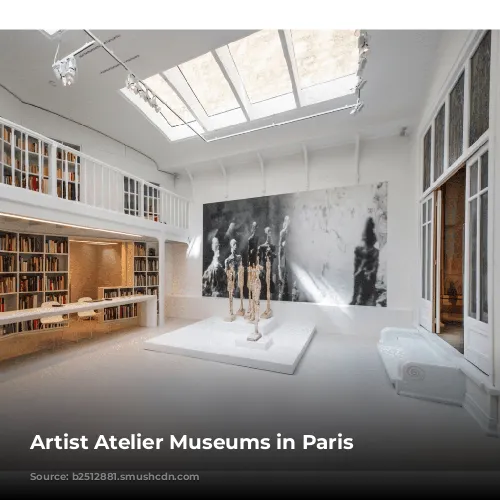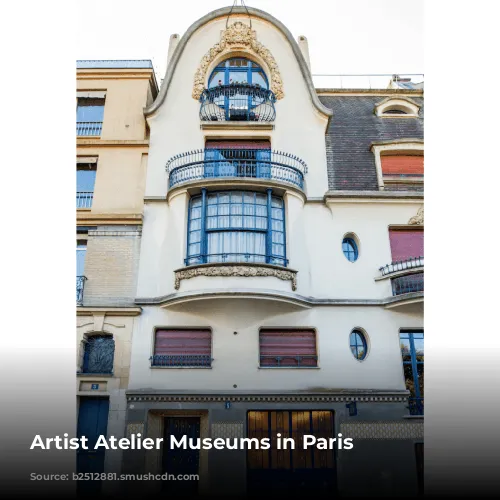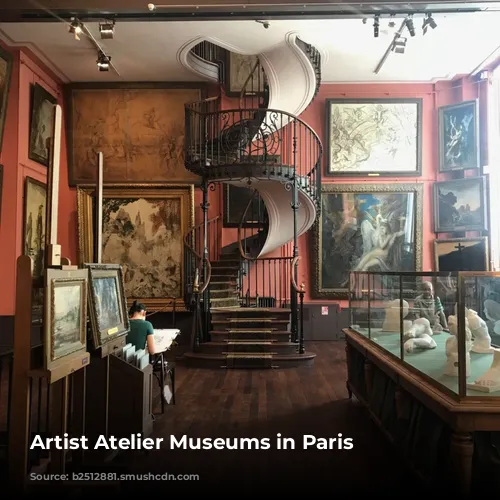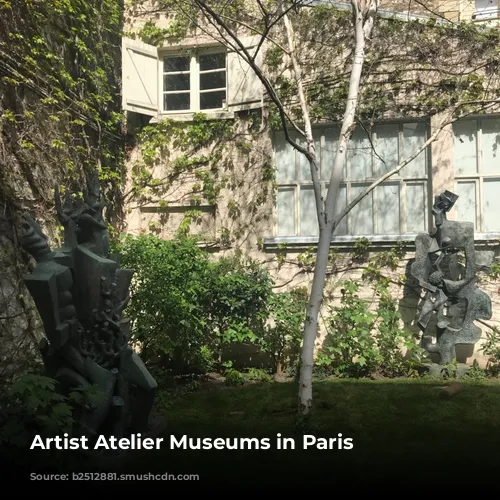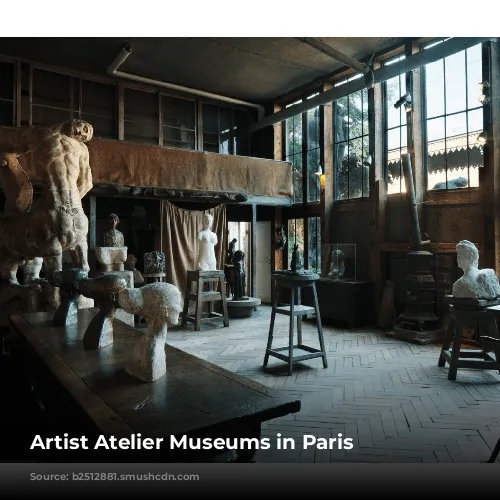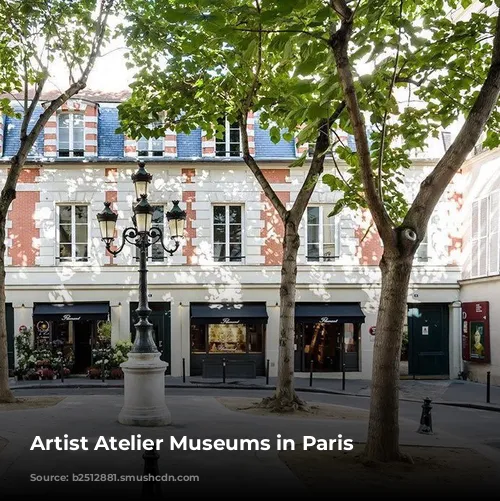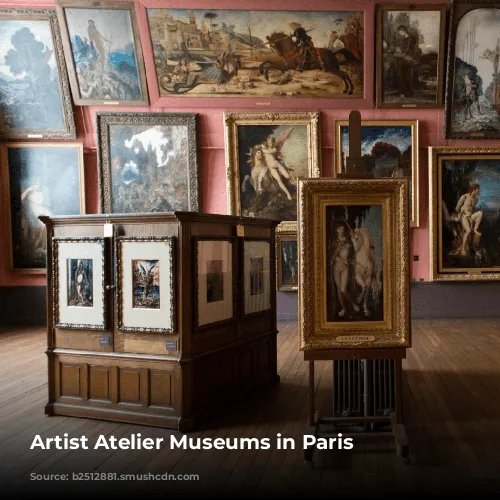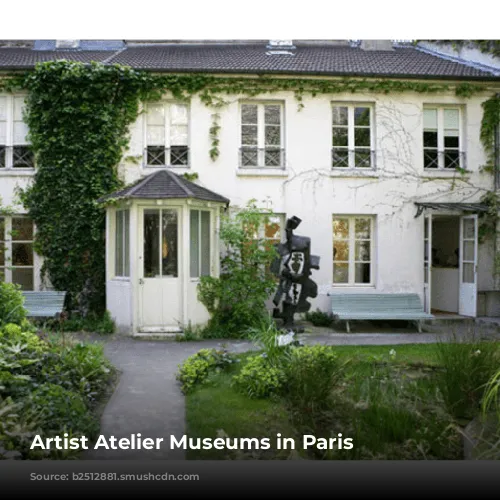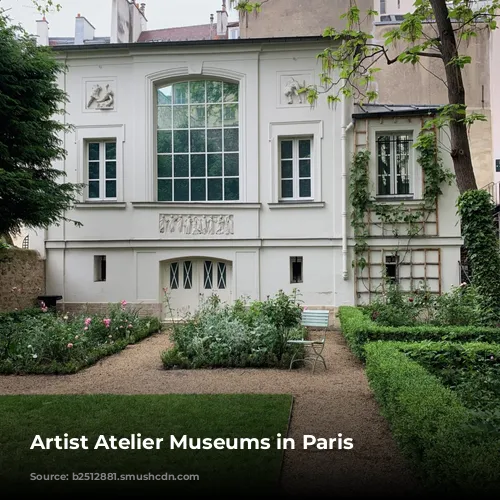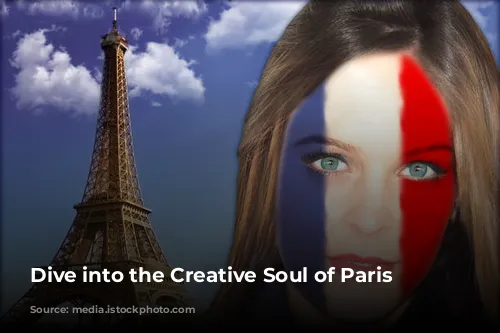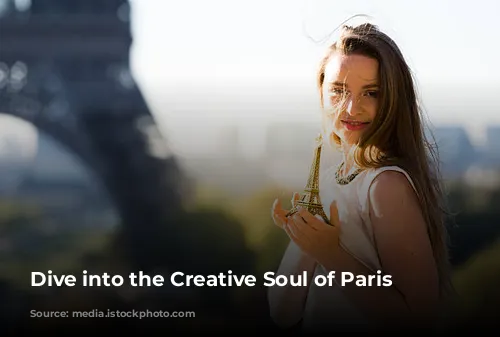Discover the fascinating stories behind some of Paris’s most celebrated artists. Take a journey through their private worlds and explore their captivating studios transformed into museums. From the grand ateliers of legendary sculptors to the tranquil havens of renowned painters, these five evocative addresses offer much more than a lesson in art.
Bourdelle’s Legacy: Where Art Meets History
Step into the heart of Montparnasse, where Musée Bourdelle stands as a testament to the artistic legacy of French sculptor Antoine Bourdelle. This remarkable atelier, nestled in the shadow of Tour Montparnasse, acts as a portal back to the district’s artistic golden age. The museum, recently reopened after extensive renovations, boasts beautifully preserved historic timber-framed architecture, a captivating glimpse into Bourdelle’s creative life.
For 45 years, this was Bourdelle’s home, a place where he not only honed his unique style but also witnessed the changing tides of societal aesthetics toward Modernism. Early in his career, he was deeply inspired by his mentor Auguste Rodin, whose influence is evident in Bourdelle’s works of rugged realism. But Bourdelle was a visionary; he later helped usher in Art Déco, leaving his mark on the celebrated reliefs of the Théatre des Champs-Élysées.
The museum isn’t merely a collection of Bourdelle’s sculptures; it’s a treasure trove of art that he meticulously gathered. From the masterpieces of Rodin, Delacroix, and Ingres to lesser-known pieces, each work tells a story. As you wander through the light-filled rooms, you’ll feel the presence of Bourdelle, even after a century since his passing. Don’t miss the whimsical sculpture garden, a delightful extension of the museum’s artistic spirit. For a delightful respite, enjoy a snack or meal at the airy, wellness-inspired café-restaurant Rhodia, offering stunning views of the garden.
Musée Bourdelle: 18 Rue Antoine Bourdelle, 75015; closed Mondays and some public holidays; free entry.
Giacometti’s World: An Artistic Journey
Just a short distance from Musée Bourdelle lies another window into Montparnasse’s artistic past, the Giacometti Institute. This stunning Art Deco building, a heritage-listed gem, once served as the studio of artist and interior designer Paul Follot. Now, it houses the legacy of the renowned sculptor and painter Alberto Giacometti.
Giacometti, born in Switzerland in 1901, spent most of his life and artistic career in Paris, specifically in Montparnasse, where he arrived in 1922. He initially apprenticed under Antoine Bourdelle, learning from the master himself. He soon found himself drawn to the Surrealist movement, which deeply influenced his work until the mid-1930s. An existential quest for meaning led him to re-examine the human form, culminating in the creation of his signature tall, wispy figurines.
The Giacometti Institute is a testament to his artistic evolution, showcasing a wide range of his work. It also houses the collection of his brother Diego Giacometti, a renowned sculptor and furniture designer in his own right.
An Exciting New Chapter: In 2026, the institute will embark on a new chapter, moving to the former Gare des Invalides station, once home to Air France headquarters.
Zadkine’s Haven: A Garden of Art
Musée Zadkine beckons you to a serene haven of art and nature, a short walk north from the Jardin du Luxembourg. This delightful garden atelier was the home and studio of the Russian sculptor Ossip Zadkine from 1928 to 1967. He aptly named it his ‘pleasure house’, a sanctuary where his creative spirit flourished.
Zadkine’s artistic journey was marked by influences from diverse sources. His early works reflected the geometric precision of Cubism, while later he was inspired by the art of Africa and Greece. His striking sculptures, often crafted from wood or stone, breathe life into the space, harmoniously blending with the tranquility of the garden.
After exploring the museum, take a leisurely stroll to the Jardin du Luxembourg and seek out Zadkine’s bronze sculpture Le Poète, a poetic tribute to the acclaimed poet Paul Éluard.
Musée Zadkine: 100bis Rue d’Assas, 75006; closed Mondays and some public holidays; free entry to the permanent collections.
Delacroix’s Sanctuary: Finding Solace in Art
Venture north to Rue de Furstemberg and discover the Musée Delacroix, a hidden gem that offers a glimpse into the life and work of the legendary Romantic painter Eugène Delacroix. As you approach, be sure to admire the majestic paulownias that frame an intricate five-globed lamppost, a grand entrance to this artistic sanctuary.
Step through the carriage door at number 6 and enter a cobbled courtyard, a peaceful prelude to what awaits within. A narrow ladder of stairs leads you to the former quarters of Delacroix, a seemingly unassuming dwelling for a man renowned for his epic works. Delacroix, considered a leading figure of Romanticism in the 1820s, made this his home in 1857 while working on murals for the nearby Église Saint-Sulpice. In the final years of his life, he found solace in this humble abode, a sanctuary where his artistic spirit found calm amidst a life filled with creative fervor.
Explore the painter’s old library and descend the back stairs to discover the heart of Delacroix’s tranquil haven. It’s not just the sun-drenched studio that holds his creative essence; it’s the garden that overlooks it. Recently redesigned in line with Delacroix’s original vision, the garden seamlessly blends a country garden with a wooded wonderland, a symphony of nature that mirrors the depth and beauty of his artistic legacy.
Moreau’s Masterpiece: A World of Symbolism
On the Right Bank, in the ninth arrondissement, resides the house museum of Gustave Moreau, a prolific nineteenth-century French Symbolist painter. Moreau, a visionary artist, not only created this enchanting space but also bequeathed it to the French State upon his death in 1898.
Musée Gustave Moreau is a captivating blend of artistry and history. The rooms are adorned with a dazzling array of ornately framed paintings, many depicting scenes from the Bible and Shakespeare. You’ll also explore Moreau’s former apartment and workshops, offering a personal glimpse into the life of a truly remarkable artist. But perhaps the most breathtaking aspect of the museum is the fabulous staircase, one of the most photographed in all of Paris. This artistic masterpiece is an enchanting culmination of Moreau’s visionary style and a testament to his legacy.
